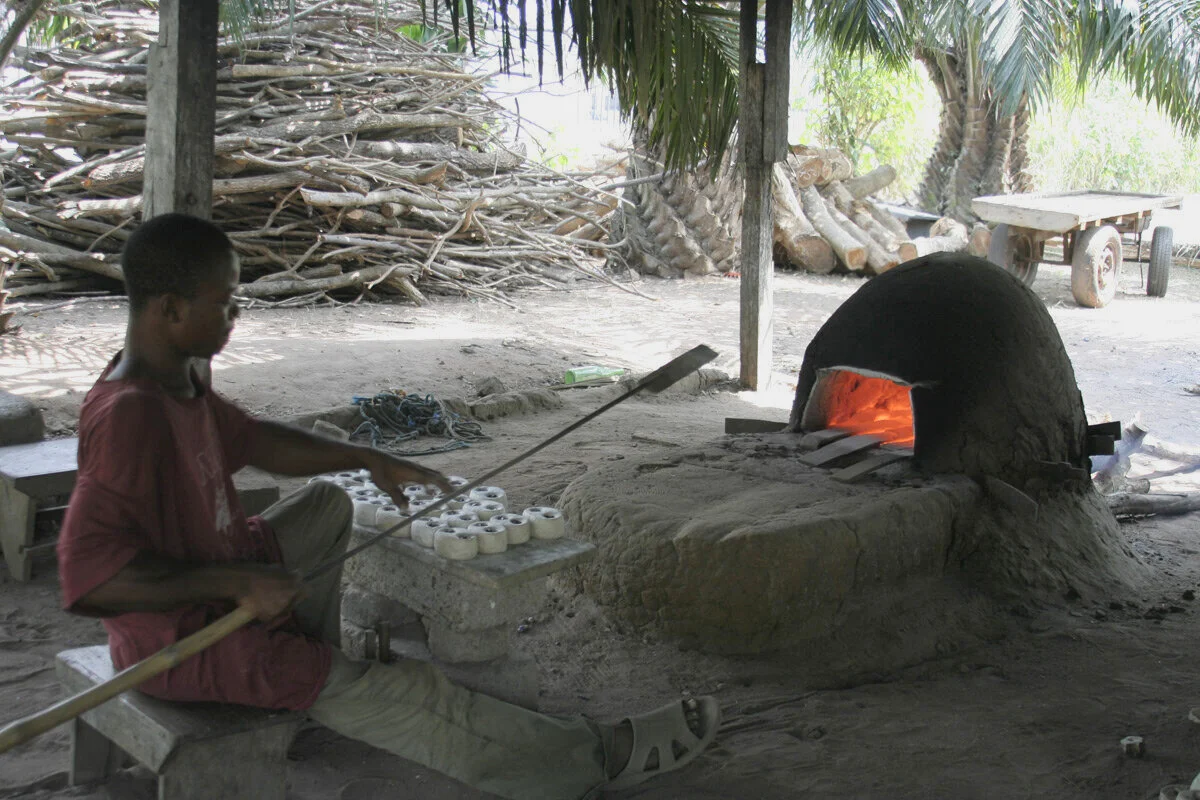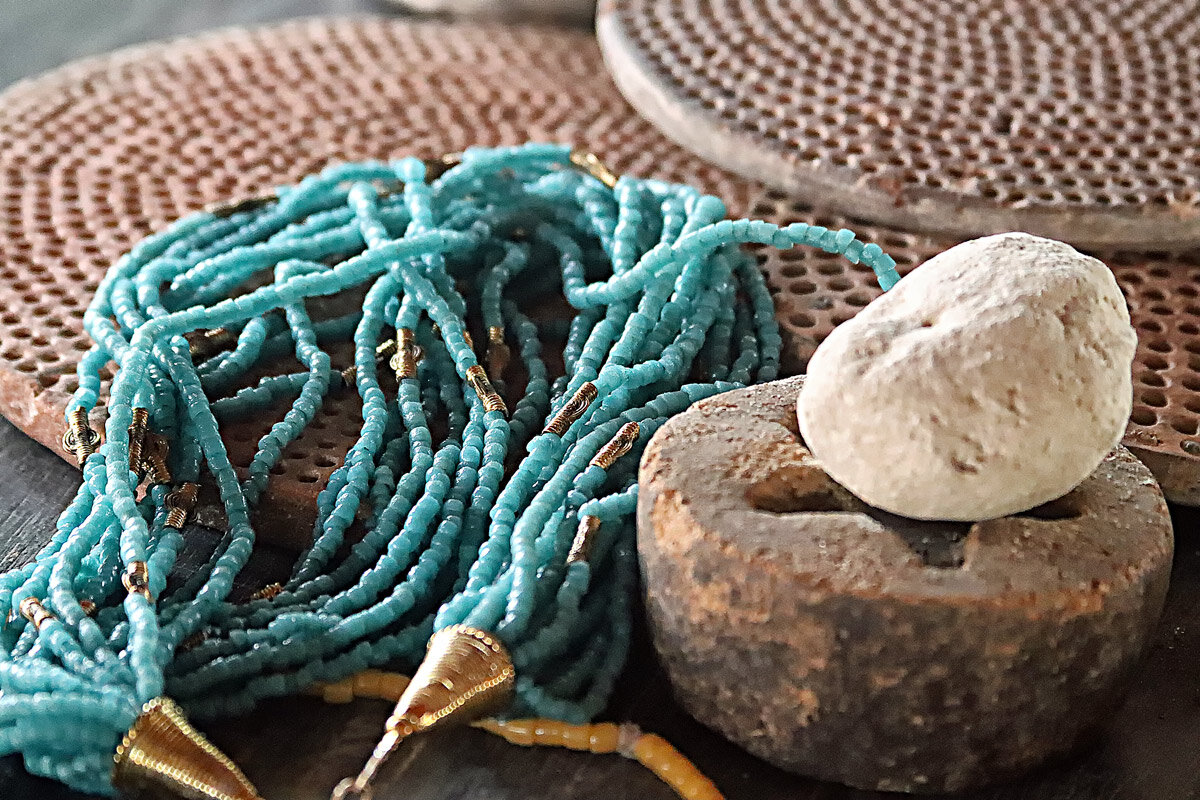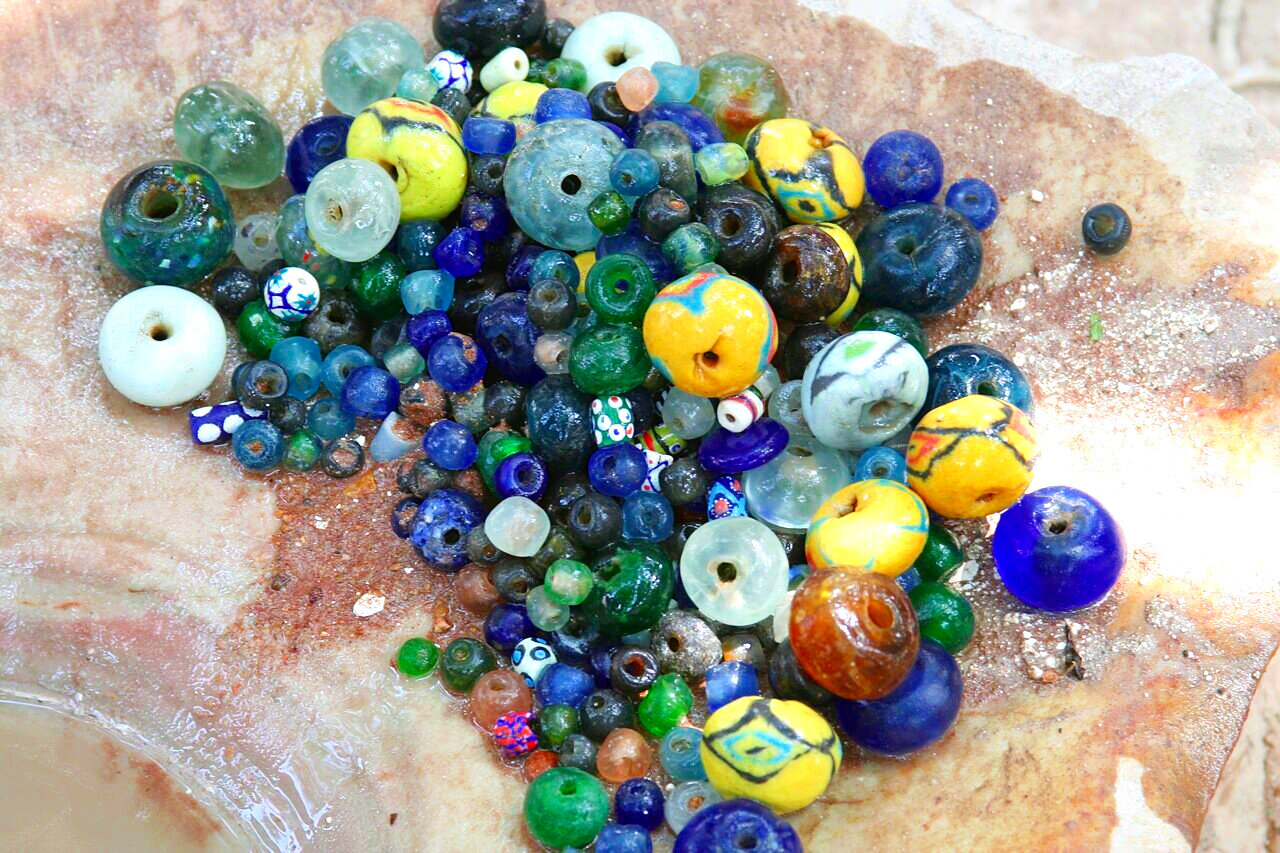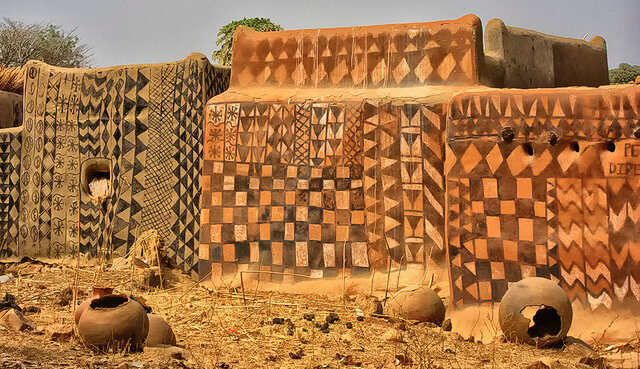
West African Ghanaian Beads
Journey with a quest: Cedi Djaba bead-making village, Krobo, Ghana
A torrent of cold water rained down on a basin of just-sanded glass beads, some the size of lollipops, others the size of pearls, as we admired the offerings at Cedi’s bead-making village in Krobo, Ghana. Wet and glistening, they begged to be touched. When I return home from leading a trip to West Africa, I am at least 20 pounds heavier, not from eating all that fantastic food that John, our cook, makes for us, but from toting the glass beads I collect at Cedi’s bead-making village! Ebenezer Nomoda Djaba, known as Cedi Djaba, is one of the most renowned bead makers in Ghana. Having made glass beads since he was seven years old, he now travels all over the world showing how he does it. Cedi is from Odumase, Krobo, a renowned center for creating Ghanaian glass beads; the following is a brief and general description of how he makes the powdered glass and translucent beads Krobo is famous for.
Cedi Djaba, renowned glass bead maker from Krobo, Ghana. He is wearing chevron beads and kente cloth.
Making glass beads
Ghana has two dominant forms of beads: powdered glass, which date from the 16th century, and translucent beads. Powdered beads are made from ordinary bottles like Heineken, Milk of Magnesia, and Coca-Cola, or from old or antique beads that produce an opaque bead. Blue bottles are in demand for waist beads for a newborn baby.
Glass bottles for making beads. The blue bottles are sought after as they make lovely waist beads for a baby.
First, bead makers wash the glass and break it into small pieces, and then mix them together. It is important that the bead maker knows the compatibility of the types of glass before mixing, because during the firing process, temperatures may increase or decrease depending on the particular glass, which affects melting times.
After the bottles and other glass items are washed, sorted by colors, and broken into small fragments, they are pounded with a mortar and pestle—or nowadays by machine—into a fine powder, and then poured into clay before being fired.
These molds contain multicolored seed beads, originally waist beads. They are being remade into larger beads with new colors.
Adding color
Different colors are also achieved by using dye chemicals which are added to the powdered glass. The molds are coated with kaolin to keep the glass from sticking to the mold, a process similar to lining a baking pan before making a cake. These molds in the photo contain multi-colored seed beads, originally waist beads. They are being remade into larger beads with new colors.
Thin cassava leaf stems are stuck in the middle of the molds to provide a hole for threading the beads. When fired the leaf disappears, but the small hole is left.
Traditional kiln made of termite clay
Molds
The molds with the powdered glass beads are then baked in traditional kilns made of termite clay for about twenty to thirty-five minutes at temperatures from 600 to 800 degrees Celsius. Once removed from heat, they are cooled, and left in their molds to prevent them from cracking. The final step is removing the bead and washing it with sand and water until smooth.
Translucent beads follow the same process, but the glass is not mixed to retain the original color of the glass bottle. The translucent beads take thirty to forty-five minutes to fire at temperatures from 800 to 1,000 degrees Celsius. See the beautiful solid and mixed colored beads in the banner photo above.
After firing, glass beads are rubbed with sand and water until smooth.
Glass beads, just washed and polished with sand. Krobo, Ghana
Glass seed bead necklace shown with molds used to make each tiny bead










